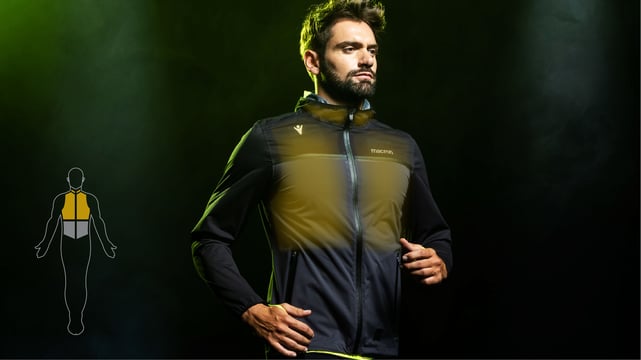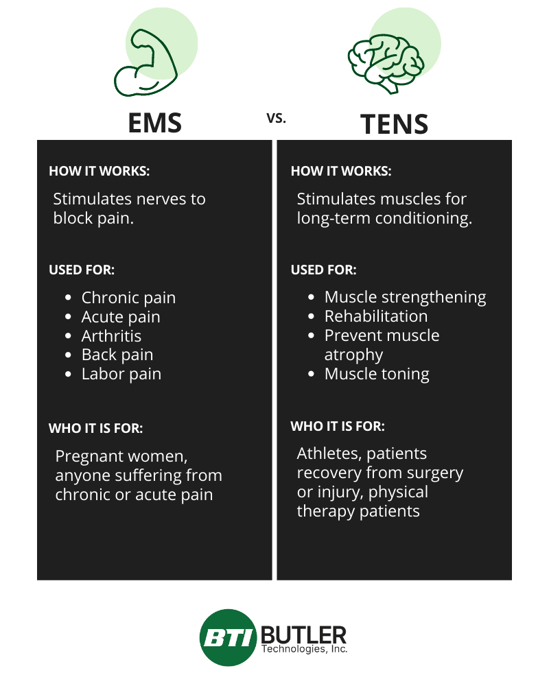Many athletes use rich data about their overall health, including breath rate, muscle activity, and more, to up their game. Smart clothing is a popular choice among athletes to obtain this data, but many people think solely of smartwatches when it comes to wearable technology.
There are many different types of smart technology that can help you analyze personal athletic data. Some technology can be screen printed and easily embedded into clothing items so the wearer doesn't even feel a difference! Printed biometric sensors, for example, can track heart rate, muscle response, and more.
How Do Biometric Sensors Work?
Biometric sensors
are made by layering conductive materials through screen printing. The first step in the screen-printing process is to determine the substrate to be printed on. The most popular material is thermoplastic polyurethane (TPU). TPU is the top choice because it is very flexible, seamless, and can be transferred onto clothing by using a heat press. The next layer in the process is adding the conductive ink. Functional silver is ideal for transferring electrical current. From there, carbon is then printed over the silver layer, which senses the electrical impulses and transmits data. The final step is a waterproof layer that protects the sensors from exposure.
Printed biometric sensors can be dry electrodes, which eliminates the need for any messy gels. By printing conductive inks onto a stretchable film, they can be easily applied to any athletic compression garment.
A compression garment is needed to provide a connection between the skin and the sensor. The sensor’s data can be wirelessly transmitted to the user's smartphone or other smart devices when wearing the garment. The athlete or fitness enthusiast can track data in real time. This eliminates the need for a bulky machine and annoying wires. Instead, the athlete can wear whatever they are most comfortable in.
Biometric sensors are custom-made to fit your unique application. Once your business needs are analyzed and understood, a team of engineers and graphic designers will work on the design of your biometric sensor. Typically, you will need to work with multiple vendors including a software designer, custom manufacturer, and apparel supplier to complete your biometric sensor project.
What Can Biometric Sensors Track?
Professional football players might want to track the contraction of their triceps to determine how to throw the perfect touchdown. Basketball players may want to track hamstring contraction to calculate the distance of their jumps. Biometric sensors can do both while tracking heart rate, breathing rate, and muscle activity.
Printed Biometric Sensors for Electrocardiography (ECG/EKG)
Monitoring heart rate during exercise is very important. With printed biometric sensors, users can easily monitor their heart rates with no wires or additional bulky electronics. Measuring heart rate during exercise can help athletes burn fat, push themselves harder, and prevent possible medical situations.
Printed Biometric Sensors for Respiratory Rate
Make your wearers as comfortable as they can be and Ditch the tubes that loop around your ears and stick in your nose. While tubes are okay for hospitals to measure breathing rates of nearly immobile patients, this is not ideal for athletes that are constantly on the move. Experts at the University of Kent found that your breathing rate is directly related to your work out, therefore your breath sizes will increase when you intensify your workout. The sensors can track anything about your breath. How hard are you breathing? How often are you breathing? Breath rate can be a good indicator of when to slow your workout down or when to increase your workout so that you’re getting the maximum benefits out of your workout. Alex Hutchinson’s article explains why fitness trackers should measure your breath rate.
Printed Biometric Sensors for Surface Electromyography (sEMG)
Printed sEMG sensors track the muscle activity by picking up electrical signals from the skin's surface. This kind of sensor works perfectly for tracking what muscles are moving. This can help athletes train and get into the best form possible. Wearing sEMG can provide the athlete and trainer with real-time data about what muscles are firing and to what extent. The sensors can also measure if muscles are working symmetrically.
Printed Biometric Sensors for Electrical Muscle Stimulation (EMS) or “e-STIM”
Adding electrical muscle stimulation to post-workout routines has many benefits. EMS sends painless electronic pulses into your nerves that make your muscle contract. EMS sensors are used to enhance workouts or speed up recovery time. Sleeves can be designed with printed EMS sensors to help athletes who are having trouble with their arm muscles.
The sleeve can contain electrodes that are specifically designed to target motor nerves. Sometimes, without the electric current, the nerves have trouble communicating with the brain. By adding the electrical pulse, it helps spark the connection.
These sensors make an athlete's muscles work harder. Depending on their workout goals, EMS can be used to help athletes recover from injuries, heal during physical therapy sessions, or further tone their muscles.
Printed Biometric Sensors for “TENS” Treatments
Many athletes choose to use electronic muscle stimulation to speed up recovery. Like the EMS, TENS treatments are a popular way for athletes to relieve pain. According to Compex, EMS and TENS are different for a couple of main reasons. The e-stim targets only motor nerves to help your body move. These are popular with chiropractors to help their clients with usually uncomfortable movements.
TENS treatments work in two different ways. First, lower-frequency treatments can stimulate sensory nerves. When these nerves are targeted, they release endorphins to help alleviate the pain. Higher frequency treatments block the pain signals from getting to the brain.
Experts found that muscle contraction is a very effective way to reduce swelling and inflammation. Lots of professional and amateur athletes have struggled with swelling and inflammation. The traditional relief for these symptoms is typically taking an ice bath or simply add more movement such as stretching. By using electronic stimulation devices, it is easy to create the perfect athletic lifestyle.

Are You Ready to Incorporate Biometric Sensors into Your Next Project?
Our team of experts have worked on unique applications that help athletes perform better with biometric sensors. Read more about our custom capabilities.
